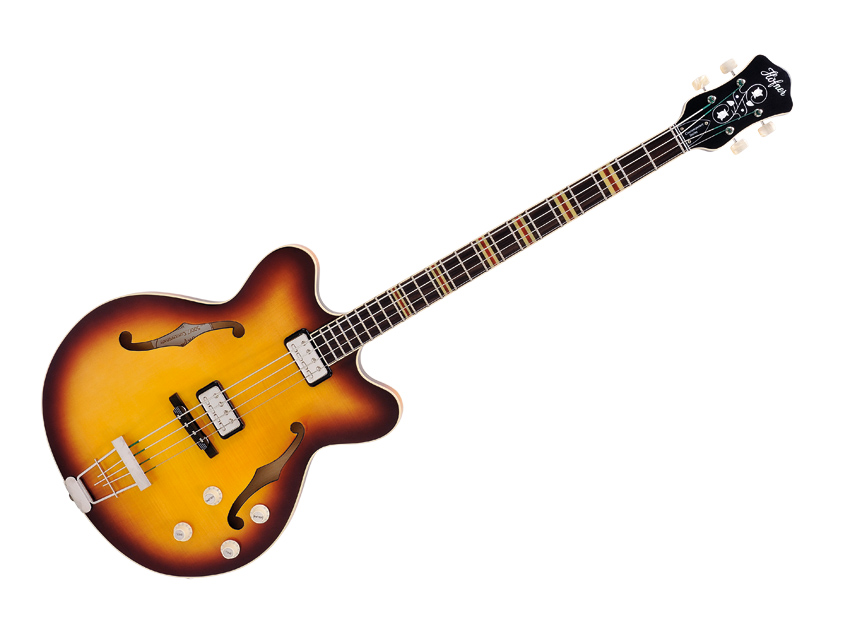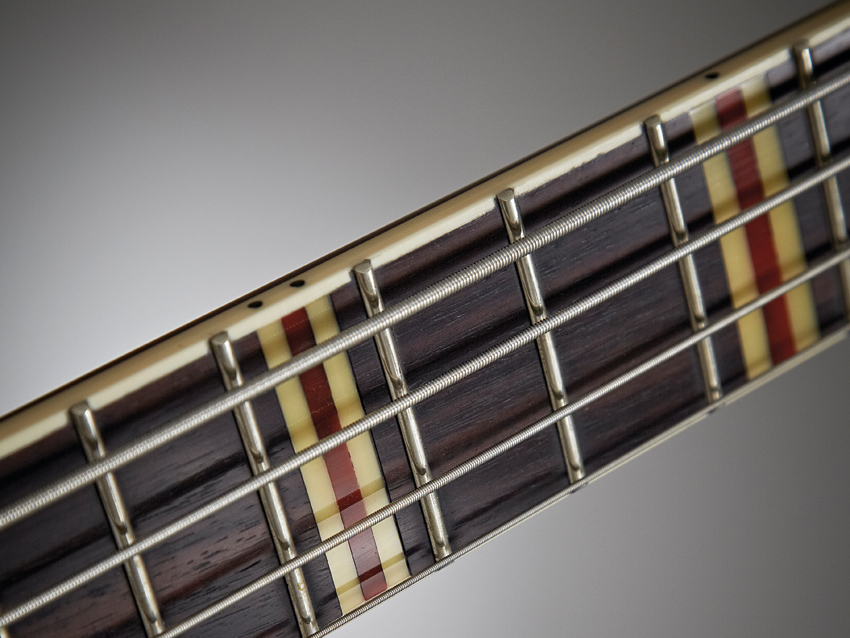MusicRadar Verdict
Despite its obvious style, the Verythin bass has been somewhat overshadowed by the iconic Violin bass. Nevertheless, if it's old-school tones you're after, plug one in.
Pros
- +
Build quality; character; excellent sounds and playability.
Cons
- -
Free floating bridges are not ideal on a bass.
MusicRadar's got your back

Hofner Contemporary Series Verythin Bass

Hofner Contemporary Series Verythin Bass
There was a time when Hofner basses were extremely popular in the UK and it started way before Paul McCartney was seen wielding his Violin bass.
Although that model came along before the Verythin guitars, these twin-cutaway semis followed the popular guitar version with the first models appearing in 1963.
"With the two pickups spread as far apart as possible the Verythin bass excels in super hollowed sounds."
Particularly glorious looking in this three-tone sunburst finish, this new version's body is constructed with a solid core for stability and to reduce feedback. It's still short scale, fully bound with f-holes, a trapeze tailpiece and the classic free floating Hofner bridge.
By today's standards this latter feature may seem somewhat crude and limited in adjustment, but it works fine and is partly responsible for the classic Hofner sound as well as being an iconic feature of its hollow guitars and basses.
With dual 'staple top' pickups, the controls are mounted near the lower f-hole, Gibson-style, while the jack is set in the body edge. As this new model comes sans pickguard, the overall aesthetic is blissfully simple.
It may be super-light in weight and a welcome relief on the shoulders, but it is rather headstock heavy. Yet while the body is relatively wide, your forearm rests comfortably and naturally holds the bass in place.
The second strap button is screwed through the pearloid plate on the base of the neck heel rather than into the heel edge as on some earlier models.
Want all the hottest music and gear news, reviews, deals, features and more, direct to your inbox? Sign up here.
Sounds
With the two pickups spread as far apart as possible the Verythin bass excels in super hollowed sounds and retains a warm robust sound. It's big on bottom end and the shorter scale also means a tighter, thumpier sound - what we'd expect from Hofner basses in general and what makes them so distinctive. But there's also a curiously penetrating aspect to it that cuts neatly through the mix when used on stage.
With a tone and volume pot per pickup, blending options are just about as good as it gets. The passive tone circuit is limited by modern standards, but there's still a good degree of variation for old-school stuff. Feedback would doubtless creep in at mega volumes but we found no such issues at normal pub/club-type levels.
The Verythin bass has a feel and sound all its own. If you want a hard rock or heavy metal bass then look elsewhere - this doesn't have the means or the attitude to cut it in those circumstances, obviously. If what you seek, however, is a good all rounder that's warm and distinctive in sound then the Verythin bass is well worth investigating.
All up, in these retro-obsessed times, Hofner's classic cool is still appealing.